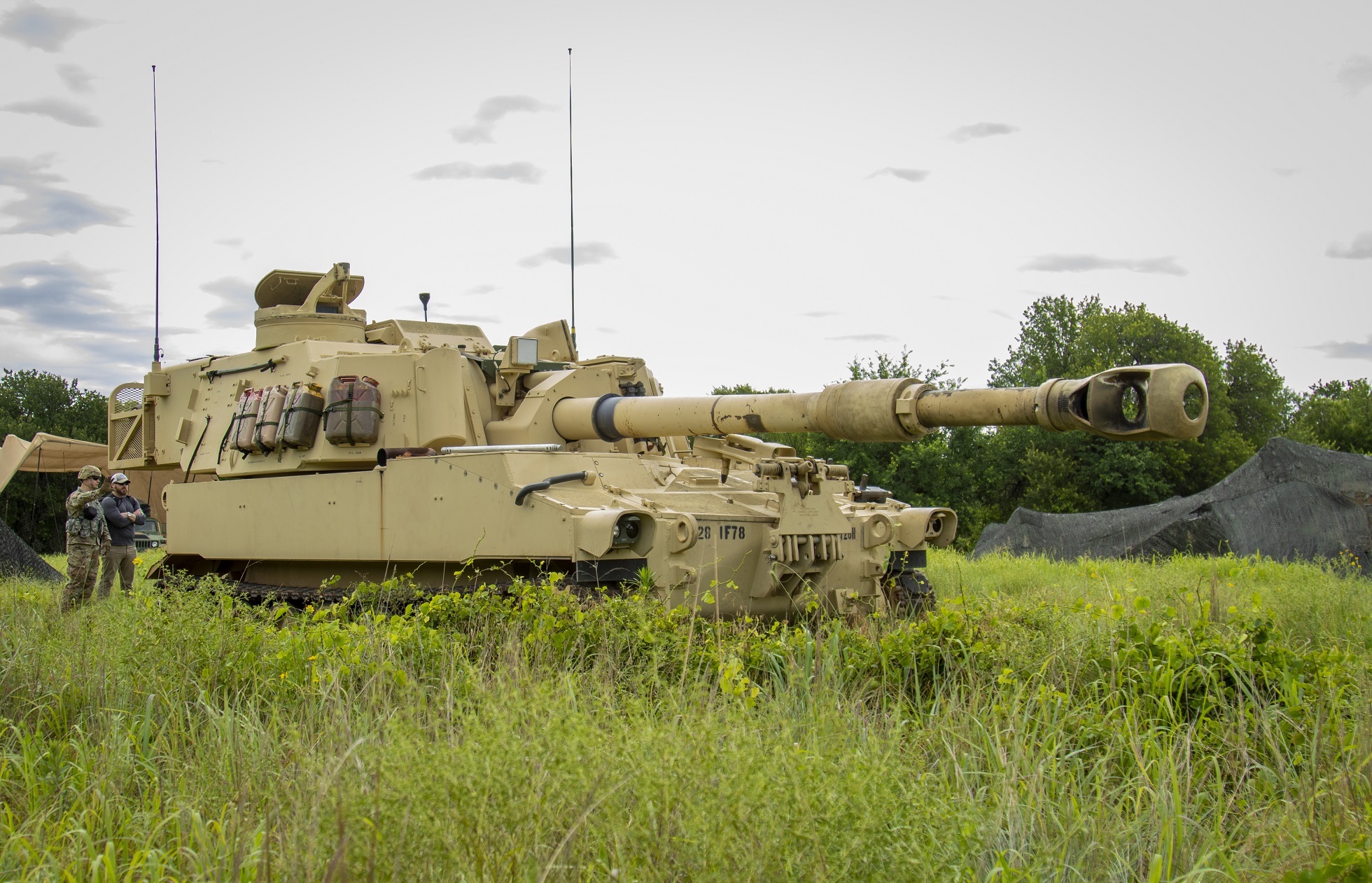Military Automation - By bringing DevSecOps and automation into network configuration activities, we can better prepare the enterprise for digital transformation. To reap the benefits of digital transformation, game-changing shifts and changes must be embraced. By implementing network automation, an organization can better integrate the change in its network needs.
Changes that can cascade across a network domain can be easily replicated and changed as a whole. Perhaps even more valuable than the ability to switch quickly is the ability to easily undo configuration changes. This ensures that, in the event of a misconfiguration, reverting to a known working state is much faster.
Military Automation
 Source: d1ldvf68ux039x.cloudfront.net
Source: d1ldvf68ux039x.cloudfront.net
These people are often more vulnerable to attack because their tasks put them in positions that are easily monitored and exploited. Getting more troops off the battlefield with autonomous vehicles can cut costs and reduce the number of people injured or killed.
Bae Systems
Nigel Whitehead is the CTO of BAE Systems. Nigel is a Certified Engineer, Fellow of the Royal Aeronautical Society and Fellow of the Royal Academy of Engineers with 33 years experience in military defense systems. When it comes to computers, however, modern militaries generally don't fare well.
In fact, they casually allowed themselves to build an Achilles' heel into their own systems, as well as the national civilian infrastructure that supports them, which is often necessary for modern military operations. Thus, they potentially made the performance of future weapons less reliable than in the past.
In other words, they may even have backed off, although it's impossible to know for sure at this point, as we haven't seen interstate wars between nearly equal competitors, which would likely be necessary to accurately assess the hypothesis.
A key strategic move of an autonomous medical vehicle is its ability to return to a forward operating base or medical station with a wounded soldier on board, while keeping other operators on the front lines.
The Benefits Of Autonomous Vehicles To The Military
Traditionally, the transport of wounded soldiers to the medical post on the battlefield was done by one or two soldiers, which made it impossible for these soldiers to operate on the front lines until they returned.
The RAND Corporation is a research organization that develops solutions to public policy problems to help make communities around the world safer, healthier and more prosperous. RAND is non-profit, non-partisan and committed to the public interest.
 Source: i.ytimg.com
Source: i.ytimg.com
Clearly, the US military is interested in exploring the capabilities of autonomous vehicles on the battlefield. Michael Griffin, Under Secretary of Defense for Research and Development at the US Department of Defense, told lawmakers in the US Congress that 52% of casualties in war zones are attributable to service members delivering food, fuel and other supplies.
In this report, we will highlight the benefits of autonomous vehicles for the military, as well as the current capabilities of autonomous vehicles that the US government is using today. We will examine products from three military defense vendors that offer autonomous vehicles to the military to provide business leaders with an overview of current applications and the status of autonomous vehicle programs.
Executive Summary
These contractors include: An autonomous vehicle operating at an airbase can increase the efficiency of airbase crews by making the airfield safer overall as fewer human operators are needed at the airfield. This project can also reduce the labor cost of managing the air base.
Some aspects of this visual data should be flagged as key objects or important scenery when working in the water, in flight or driving. The algorithm will go through the labeled frames and this will allow it to match the labels to the pixels that make up the labeled area of the frame and those pixels to what happens next in the frame.
Network automation can simplify many of the common issues that arise when creating new temporary networks or integrating interservice networks. In addition to improving service efficiency and speed, network automation can greatly improve security, especially as services move to zero trust models.
Automation can also reduce human error and leverage best practices, which is important because the government frequently changes both public officials and contractors responsible for operating networks. SMSS keeps an eye on a soldier using machine vision and 3D Lidar.
SMSS follows the designated operator based on the user's appearance; this operator visually connects to the SMSS before each mission. This soldier is free to move while SMSS follows him and responds according to the operator's actions.
The soldier can also issue trip orders to the SMSS via the touchscreen controller or manually operate it from the same console. A pilot of the VA Automated Benefits System, launched in December, analyzed applications submitted by veterans seeking to improve their hypertension disability rating and shortened the process by 98 days for those with complete files.
 Source: mms.businesswire.com
Source: mms.businesswire.com
In a previous report on AI initiatives at five major US defense contractors, we discussed Northrop Grumman's DARPA-funded X-47B autonomous aircraft. A Northrop Grumman X-47B took off and landed on an aircraft carrier at sea. Today, a human pilot's ability to take off and land an aircraft at sea is the test of pilot skill.
Since the start of the pandemic, the number of overdue claims has increased from 70,000 to 211,000. While the VA has reduced that number to about 180,000 in mid-2021, that number has increased again as veterans apply for benefits while expanding covered conditions to include illness associated with Agent Orange and air pollutants.
Boeing is offering the military a variety of autonomous vehicles that it says can help military operators perform routine and mission-critical tasks efficiently, with less risk to the lives of military operators. In 2017, Boeing Defense, Boeing's predominantly nonprofit arm that specializes in government contracts, reported $29.5 billion in revenue.
That makes it the second largest defense contractor for the US and world militaries. Boeing, founded in 1916, is a publicly traded company with more than 120,000 employees. “We saw an opportunity to look at our traditional disability claim process and see how we can best use the data we have…, during a press conference with reporters on Tuesday.
Griffith: Networked automation offers many benefits to the military. Because the military has such a dynamic operating environment and wide range of networking needs, automation can remove many of the tedious tasks needed to build and integrate temporary networks in the field, interoperate with allies, and maintain and innovate in the field.
within the company. Automation frees up trained staff to tackle unique and complex challenges and provides a solid, consistent network infrastructure foundation on which to build. Griffith: Automation is a vital ingredient for bringing DevSecOps into the networking arena, and it's proven and used heavily in the telecom industry.
Network automation organizes all the steps, procedures and processes required to implement a specific network task. The automation environment can then be versioned, and when similar tasks need to be performed again, they can be accurately reproduced using automation scripts.
This feature allows less experienced network administrators to implement complex network configurations. This report is part of the RAND Corporation Research report series. RAND reports provide objective research and analysis of the challenges faced by the public and private sectors.
 Source: api.army.mil
Source: api.army.mil
All RAND reports are carefully peer-reviewed to ensure high standards of quality and research objectivity. “We will ensure that our employees continue to monitor and validate automation-related rules, algorithms to ensure that all statutory regulatory and procedural guidance is followed and [they] have ultimate control of decision-making in regards to the grievance process,” he said.
Lockheed Martin is currently under contract with the US government for an autonomous UGV called the Squad Mission Support System, or SMSS. The SMSS was designed to carry military equipment, heavy weapons, medical equipment and food for entire platoons of soldiers, allowing them to be less encumbered when crossing on foot.
Lockheed Martin was awarded a trial contract by the US Department of Defense for the use of autonomous vehicles on the front lines, which resulted in the use of SMSS by the US Army in Afghanistan since 2011. As discussed further in my side article, Retrospective of the so-called military revolution, 2000-2020, Wii later concluded that it was right about computers, but should have added robotics to the list of technologies likely to undergo radical change.
(My previous estimate, in 2000, predicted "high" rates of change in robotics such as drones, rather than radical or revolutionary progress.) Notably, the Department of Defense (DoD) currently has around 20,000 unmanned vehicles of various types in service, and the many new uses for them this century, from Iraq and Afghanistan to the Middle East and beyond, are remarkable.
Enemy forces are also increasingly using robotics. As Europe's largest military defense contractor, one would think that BAE Systems would continue to develop the autonomous vehicle. This reality highlights that the industry of autonomous vehicles for the military is new.
It appears that BAE Systems has been granted permission to test and operate autonomous vehicles for commercial use in the UK. Strictly speaking for the defense industry, BAE Systems offers AI design consulting services in addition to its Ironclad UGV, although its current innovations in AI design are yet to be seen.
Vermont Air National Guard soldiers and airmen work in the Joint Operations Center covering 24-hour operations during Vigilant Guard 2016 at Camp Johnson, Virginia (Air National Guard photo taken by Tech Sgt. Chelsea Clark) Lockheed Martin offers US military several solutions in the field of artificial intelligence.
The company claims to help military operators perform routine and critical tasks efficiently with less risk to the lives of military operators. In 2017, Lockheed Martin reported $51 billion in revenue, of which $35.2 billion came from US government contracts.
 Source: i.pinimg.com
Source: i.pinimg.com
This makes Lockheed Martin the largest contractor to the US military and the largest defense contractor in the world. They also reduce the cost of operator training. Fighter pilot training is very expensive. Air Force Deputy Chief of Staff for Personnel and Human Resources, Lt. Gen. Gina M. Grosso, said that training a fighter pilot costs about $11 million today.
The monetary benefits of autonomous vehicles lie in the long-term savings in these operating costs, as many of these costs are eliminated when an autonomous vehicle can perform some of the missions that these operators would otherwise perform.
These expenses include instructor pilot salaries, as well as student and instructor meals and lodging. The system accepts paper or electronic claims and uses algorithms to determine whether a file contains enough data and information to make a decision.
It then compares the information to the rules governing disability claims and makes a recommendation to approve or reject the claim. Two lessons emerge from this earlier analysis. First, the approach I developed in the 2000 book appears to be useful.
It is valuable to assess future trends in military technology by examining several very broad but also very specific and discrete areas of defense-related technology and then integrating these individual discoveries into a broader framework for predicting future warfare.
This methodology does not encourage exaggeration in choosing areas of technology that may be the most (or least) promising. It also helps to identify the specific technological factors most likely to cause any kind of drastic change in the broader military capability, in order to discover what could lead to a revolution in military affairs if that happens any time soon.
In this article, we will look at various military drones and UAVs with AI capabilities. There are many use cases for AI when it comes to drone technology. The military appears to routinely use AI to allow its drones to fly on their own, which requires machine vision.
Autonomous vehicles can reduce workforce downtime. They can be designed to run 24/7 without being distracted by sleep deprivation or hunger. Also, human operators need to change shifts with substitutions; these shifts often require planning and expense, for example a patrol boat must dock to change operators.
 Source: upload.wikimedia.org
Source: upload.wikimedia.org
Autonomous vehicles have also made long-range targeted missions more possible. By the end of 2011, the system's robust technology had received six security clearances and security approval from the US Army to work in close proximity with US soldiers.
Lockheed Martin claims the SMSS recorded hundreds. assists with multiple US military users through 2014, predominantly in Afghanistan but also in the continental US. BAE Systems offers a multipurpose unmanned ground vehicle (UGV) called the Ironclad.
BAE Systems says the Ironclad can be equipped with a variety of equipment modules to fulfill various missions on the battlefield, such as a remotely controlled weapons platform, reconnaissance vehicle, artillery disposal device and medical vehicle.
This vehicle has been included in this report as a window into the space of UGV capabilities for military use on the battlefield in the near future. Ironclad is being built for remote control, but BAE Systems said Ironclad is also being tested for autonomous operation.
Like our article on AI in the top five US defense vendors, this report discusses AI initiatives in Israel's top four defense vendors by revenue. Although Israel is only 70 years old, it has one of the most modern armies in the world.
In the area of robotics, US military organizations have responded with innovative and entrepreneurial acumen, creating new tactics to meet the challenges of complex counterinsurgency and terrorism operations. Other military organizations around the world have also made significant progress in this area.
automation in military operations, military robotics advancements, military robotics in the future, military robotics companies, robotic technology in the military, us military robotic weapons, robotics in the military, defense robotics companies
 Source: i.ytimg.com
Source: i.ytimg.com Source: www.military.ie
Source: www.military.ie Source: www.usarmyjrotc.com
Source: www.usarmyjrotc.com
 Source: pbs.twimg.com
Source: pbs.twimg.com Source: i.pinimg.com
Source: i.pinimg.com Source: sothebys-md.brightspotcdn.com
Source: sothebys-md.brightspotcdn.com Source: i.pinimg.com
Source: i.pinimg.com Source: digital-classroom.nma.gov.au
Source: digital-classroom.nma.gov.au